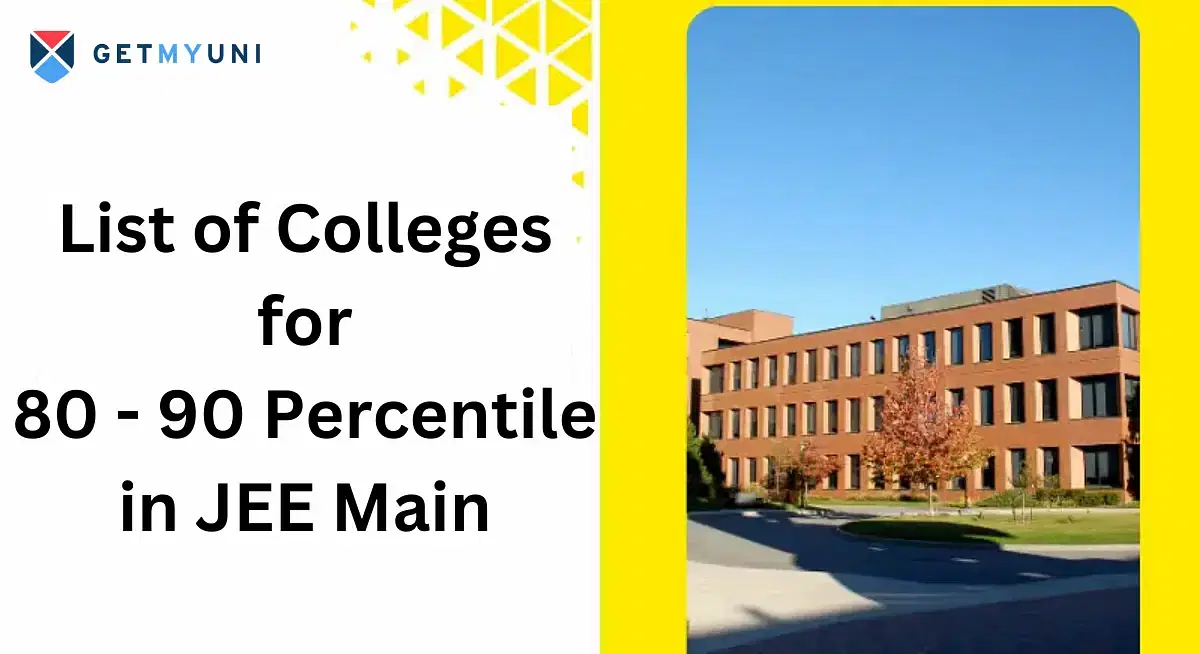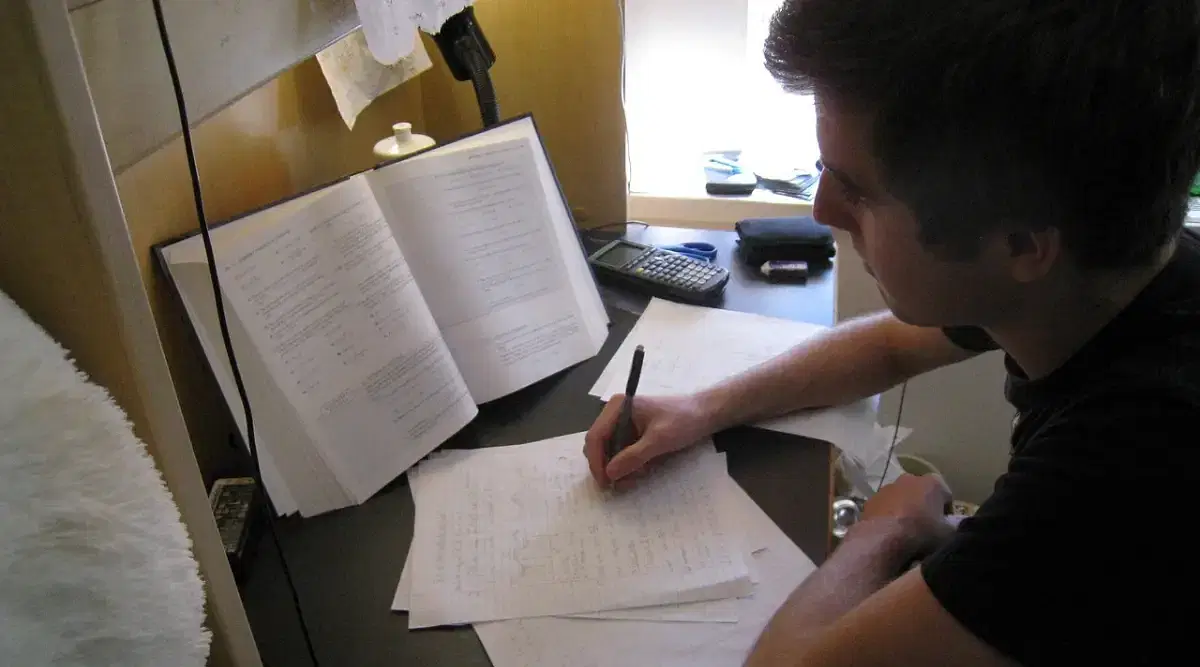The JEE Main MCQ questions, which are based on all the subjects of Physics, Chemistry and Mathematics, are from Modern Physics, Electrostatics, Magnetism, Calculus, Coordinate Geometry, Matrix and Determinants, and Organic Chemistry.
Table of Contents
The JEE Main MCQ Questions will be based on Physical Chemistry, Organic Chemistry, Inorganic Chemistry, Modern Physics, Electrostatics, Magnetism, Calculus, Coordinate Geometry, Matrix and Determinants, Permutation and Combination. Each of the sections among Physics, Chemistry, and Mathematics, has 20 MCQs and 10 numerical answer type questions.
All these topics are an important part of JEE Main Syllabus 2025, and candidates should practise them carefully to ace the JEE Main 2025 exam.
JEE Main 2025 Session 2 is scheduled to be conducted from Apr 1 to Apr 8, 2025. JEE Main Session 1 is conducted from Jan 22 to Jan 30, 2025. JEE Main admit card for Session 2 will be released on the official website by the conducting authority in the last week of March 2025.
Read More: JEE Main 2025 Sample Paper with Solutions PDF
JEE Main MCQ Questions with Solutions - Download PDF
The JEE Main questions with solutions that have the probability of being asked in JEE Main 2025 are added in the PDF below, and students can directly download the PDF by clicking on the link..
| JEE Main MCQ Questions with Solutions | Download Link |
Read More: JEE Main Model Questions with Solutions - Download PDF
Top 18 JEE Main MCQ Questions with Solutions
The top 18 JEE main MCQ questions with solutions are listed below, comprising all the important topics from all the subjects (Physics, Chemistry and Mathematics). Students are advised to solve them to understand and grasp their subjects.
Q1. Which of the following is the highest energy electromagnetic wave?
(A) X-ray
(B) Infrared
(C) Microwaves
(D) Radiowave
Ans: X-ray
Q2. Which one of the following exhibits the largest number of oxidation states?
(1) Mn(25)
(2) V(23)
(3) Cr (24)
(4) Ti (22)
Ans: Option (1), Manganese can show six oxidation states from +2 to +7. It has five unpaired electrons in the 3d orbitals and 2 electrons in the 4s orbitals.
Q3. Find the dictionary rank of MANKIND.
Ans: 1492.00
Q4. Statement -I: Electromagnets are made of soft iron.
Statement -II: Soft iron has lower permeability and high retentivity.
Choose the correct option related to statements.
(A) Statement - I is true, and Statement - II is also true
(B) Statement - I is true, but Statement - II is false
(C) Statement - I is false, but Statement - II is true
(D) Statement - I is false, and Statement - II is also false
Ans: B
Q5. The time period of a pendulum measured on the surface of a planet with a stopwatch of 1-sec isolation is found to be 200 sec. Its length was measured as 1±0.001m. the percentage error in the measurement of the arc due to gravity is
(a) 1.1%
(b) 0.3%
(c) 2.5%
(d) 5.2%
Ans: (a)
Q6. The period of a pendulum is measured on the surface of a planet with a stopwatch of 1-sec resolution is found to be 200 sec. Its length was measured as 1±0.001m. Percentage error in measurement of are due to gravity is
Options:
(a) 1.4%
(b) 1.1%
(c) 2.2%
(d) 2.1%
Ans: (b)
Q7. The ratio of wavelengths of photons corresponding to the first and second line of the
Balmer series in an emission spectrum is given by x/20 for a hydrogen-like species.
The value of x is equal to
Ans: 27
Q8. The sum & product of the mean & variance of the Binomial distribution is 24 & 128, respectively. Find the probability of 1 or 2 successes.
Ans: 32
Read More: JEE Main Paper 2 Drawing Questions with Solutions - Download PDF
Q9. The actinoids exhibit more number of oxidation states in general than the lanthanoids. This is because
(1) the 5f orbitals extend further from the nucleus than the 4f orbitals
(2) the 5f orbitals are more buried than the 4f orbitals
(3) there is a similarity between 4f and 5f orbitals in their angular part of the wave function
(4) the actinoids are more reactive than the lanthanoids.
Ans: Option (1) Since the distance between the nucleus and 5f orbitals is more than the distance between the nucleus and 4f orbitals, the hold of the nucleus on valence electron decreases in actinides. So, actinoids exhibit more oxidation states in general.
Q10. How four-digit numbers lying between 1000 & 3000 can be made, which are divisible
by 4, using digits 1, 2, 3, 4, 5, and 6 with no repetition.
Ans: 30.00
We will solve the Question in two cases.
Case I: When the first digit is 1.
Then, the last two digits can be 24, 32, 36, 52, 56, and 64.
Number of such numbers = 6×3=18
Case II: When the first digit is 2
Then, the last two digits can be 16, 36, 56 or 64
Number of such numbers = 4×3=12
Total numbers of numbers =18+12=30
Q11. A body is rotating with kinetic energy ‘E’. If the angular velocity of the body is increased
to three times the initial angular velocity. Then, the kinetic energy becomes nE. Find n.?
Ans: 9
Q12. Consider two statements:
Statement 1: We can get displacement from the acceleration-time graph.
Statement 2: we can get acceleration from the velocity-time graph.
(A) Statement - I is true, and Statement - II is also true
(B) Statement - I is false, and Statement - II is also false
(C) Statement - I is true, but Statement - II is false
(D) Statement - I is false, but Statement - II is true
Ans: D
Also Read: JEE Main Tips and Tricks 2025 - Effective Study Plan
Que13. The optically inactive compound from the following is
(a) 2-chloropropanal
(b) 2-chloroethane
(c) 2-chloroquine
(d) 2-chloro-2-methylbutane.
Ans. Option D, there is no chiral centre, 2-chloro-2-methylbutane is optically inactive.
Also Read: 9 Most Difficult Questions in JEE Main with Answers
Que14. Let S be the sample space for 5-digit numbers. If p is the probability of a number being
randomly selected, which is a multiple of 7 but not divisible by 5, then 9p is equal to:
Options:
(a) 1.0146
(b) 1.2085
(c) 1.0285
(d) 1.1521
Ans. (c)
Que15. A proton and an electron have equal kinetic energy, the ratio of de-Broglie
wavelength of proton and electron is 1/x. Find x.
Ans. 43
Que16. What is DDT among the following?
(a) A fertiliser
(b) Biodegradable pollutant
(c) Non-biodegradable pollutant
(d) Greenhouse gas
Read More: Most Easy Chapters for Maths in JEE Main 2025
Ans. Option C, DDT (Dichloro diphenyl trichloroethane), is a non-biodegradable pollutant. The non-biodegradable pollutants cannot be broken down into simpler, harmless substances in nature.
Que17. The mean and variance of 10 observations were 15 and 15. The mistake was 25 instead of 15. The new standard deviation is:
Ans. Variance is four, and SD is 2
Que18. The IUPAC name of neopentane is :
(1) 2–methylpropane
(2) 2, 2–dimethylbutane
(3) 2–methyl butane
(4) 2, 2–dimethylpropane
Ans. Option 4
Also Read: JEE Main Model Questions with Solutions






![Indian Institute of Technology, [IIT] Kanpur](https://media.getmyuni.com/azure/college-image/small/indian-institute-of-technology-iit-kanpur.jpg)
![Indian Institute of Technology, [IIT] Roorkee](https://media.getmyuni.com/azure/college-image/small/indian-institute-of-technology-iit-roorkee.jpg)
![Jawaharlal Nehru University, [JNU] New Delhi](https://media.getmyuni.com/azure/college-image/small/jawaharlal-nehru-university-jnu-new-delhi.jpg)
![University of Calcutta, [UC] Kolkata](https://media.getmyuni.com/azure/college-image/small/university-of-calcutta-uc-kolkata.jpg)





































POST YOUR COMMENT